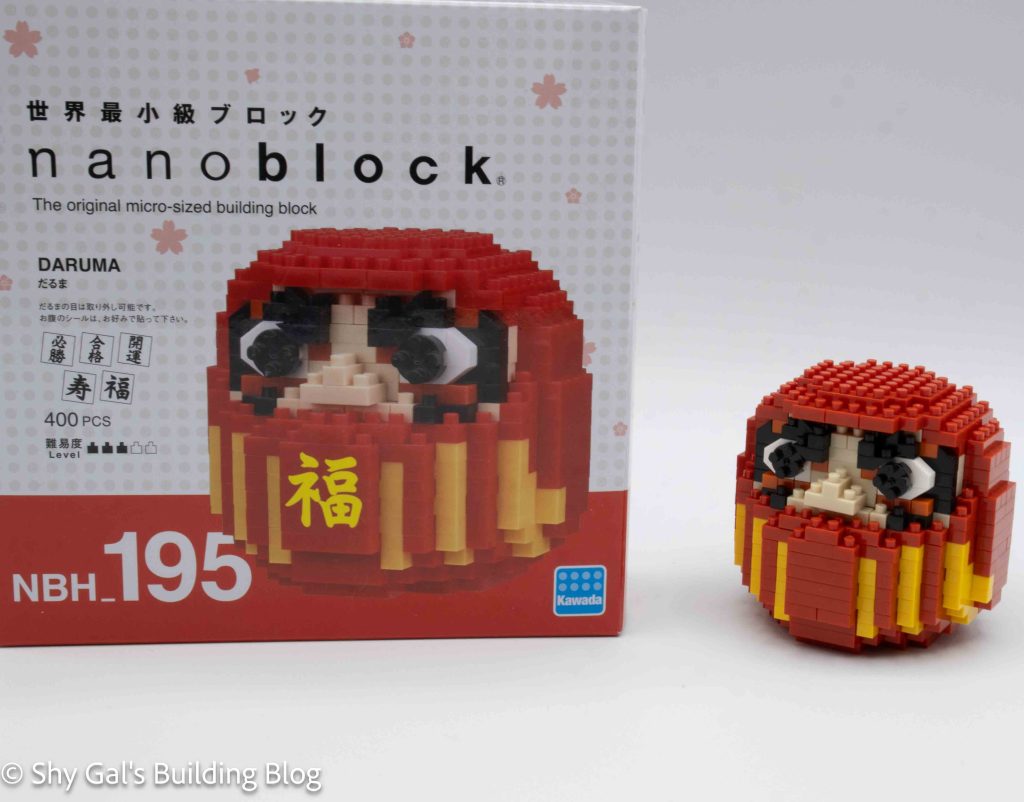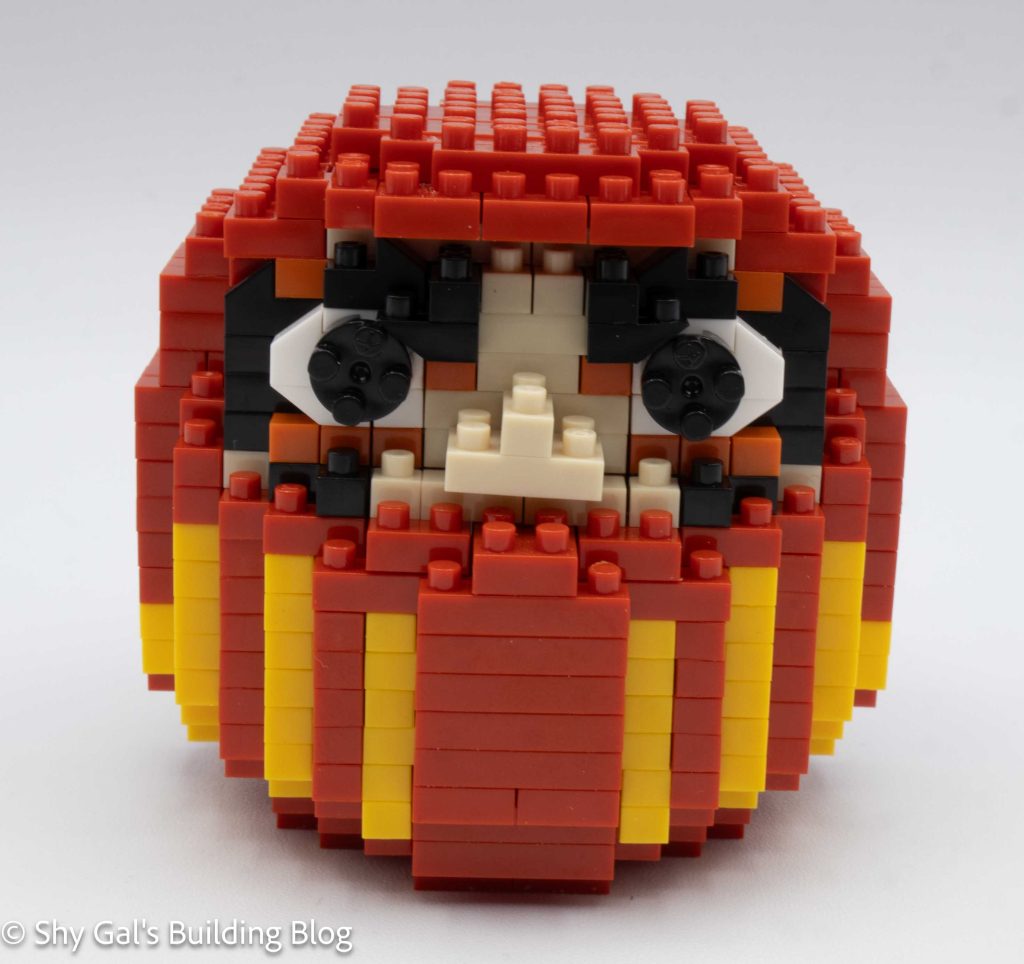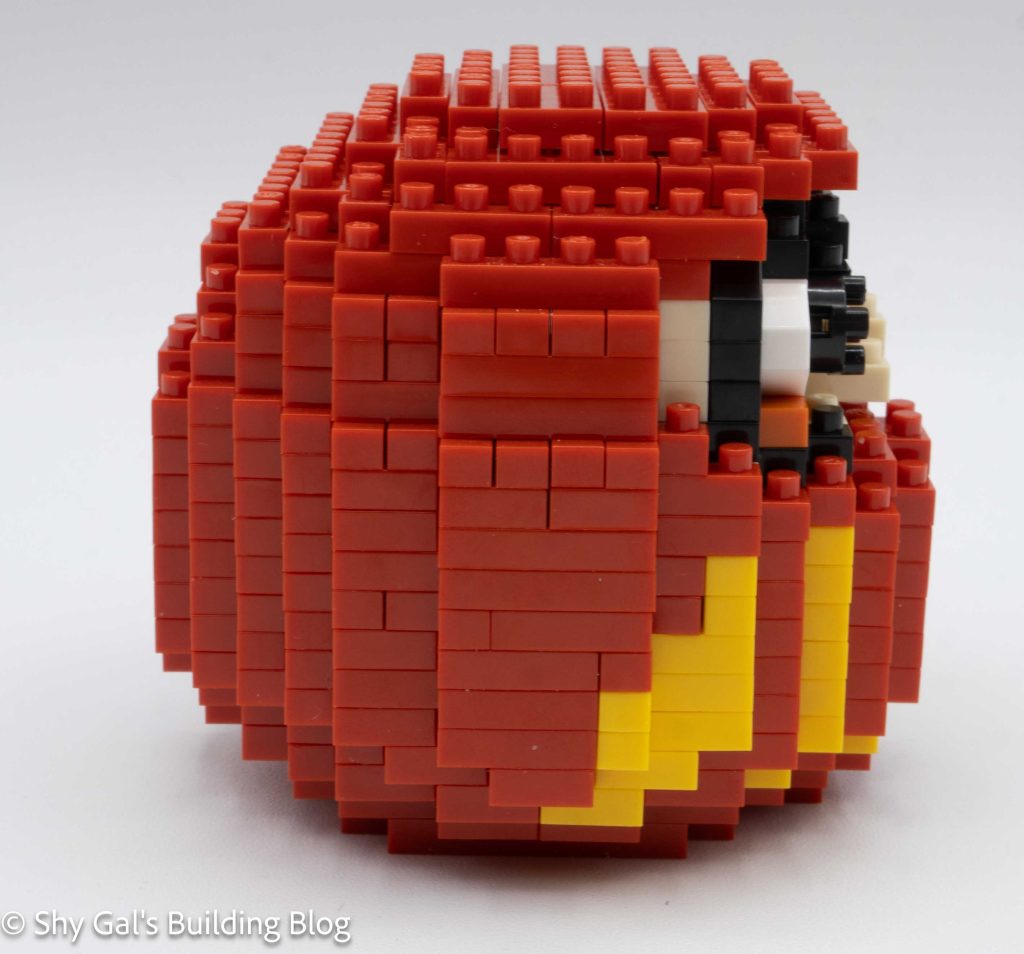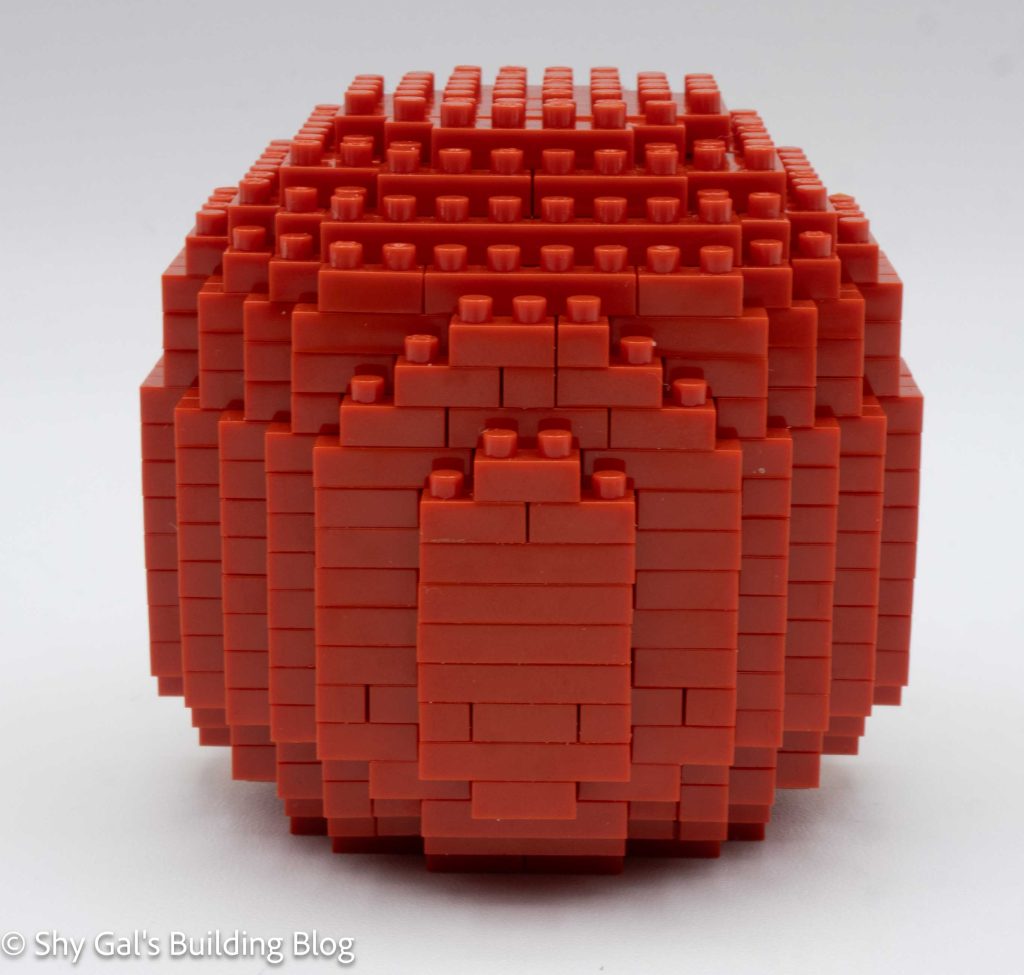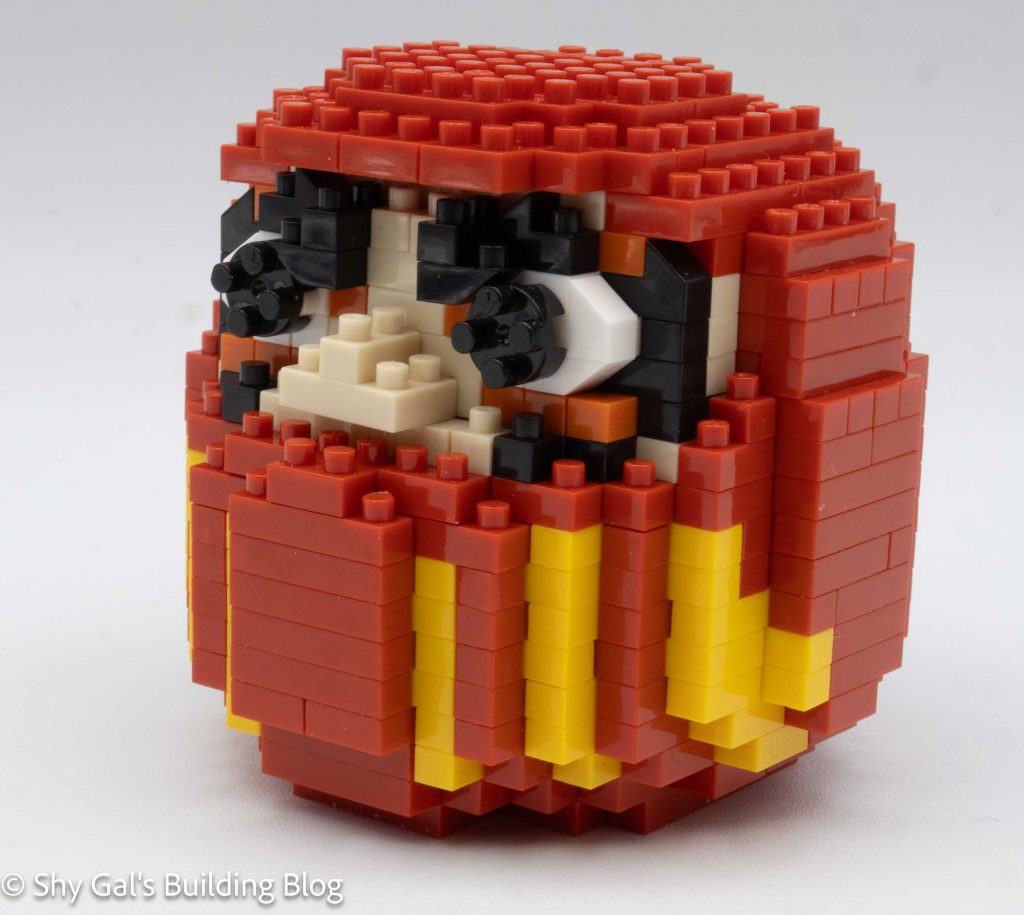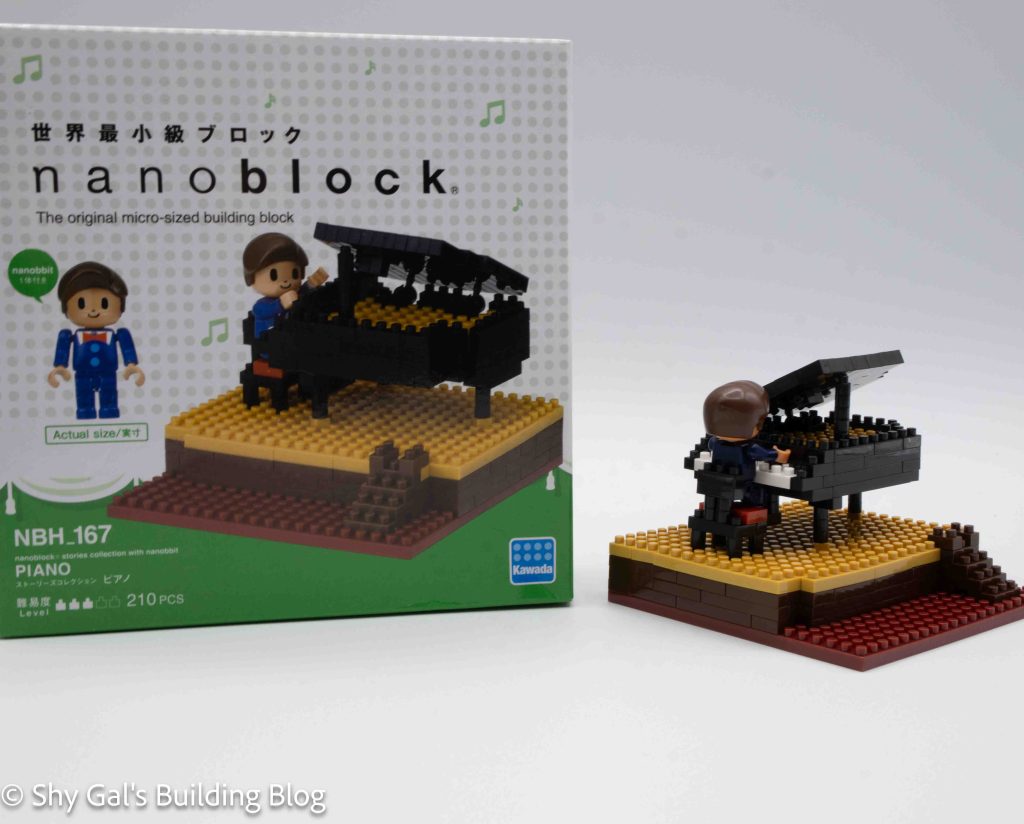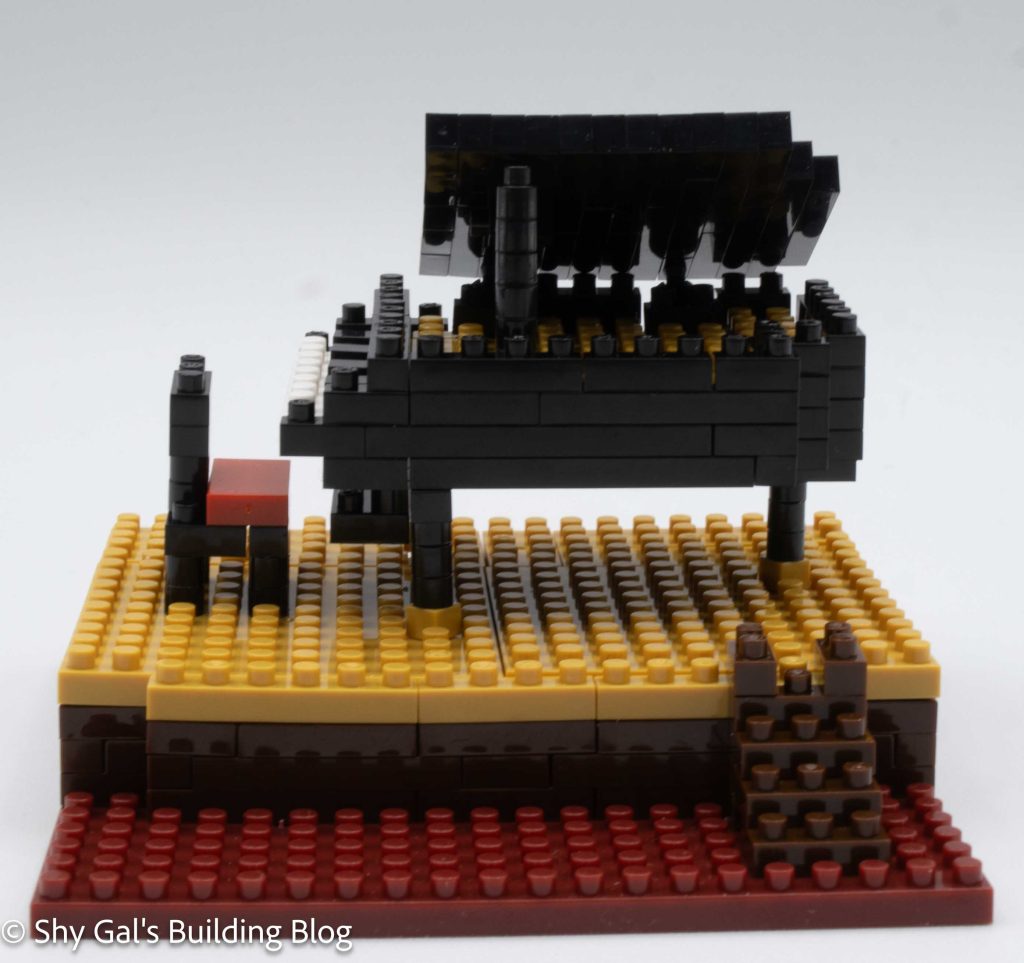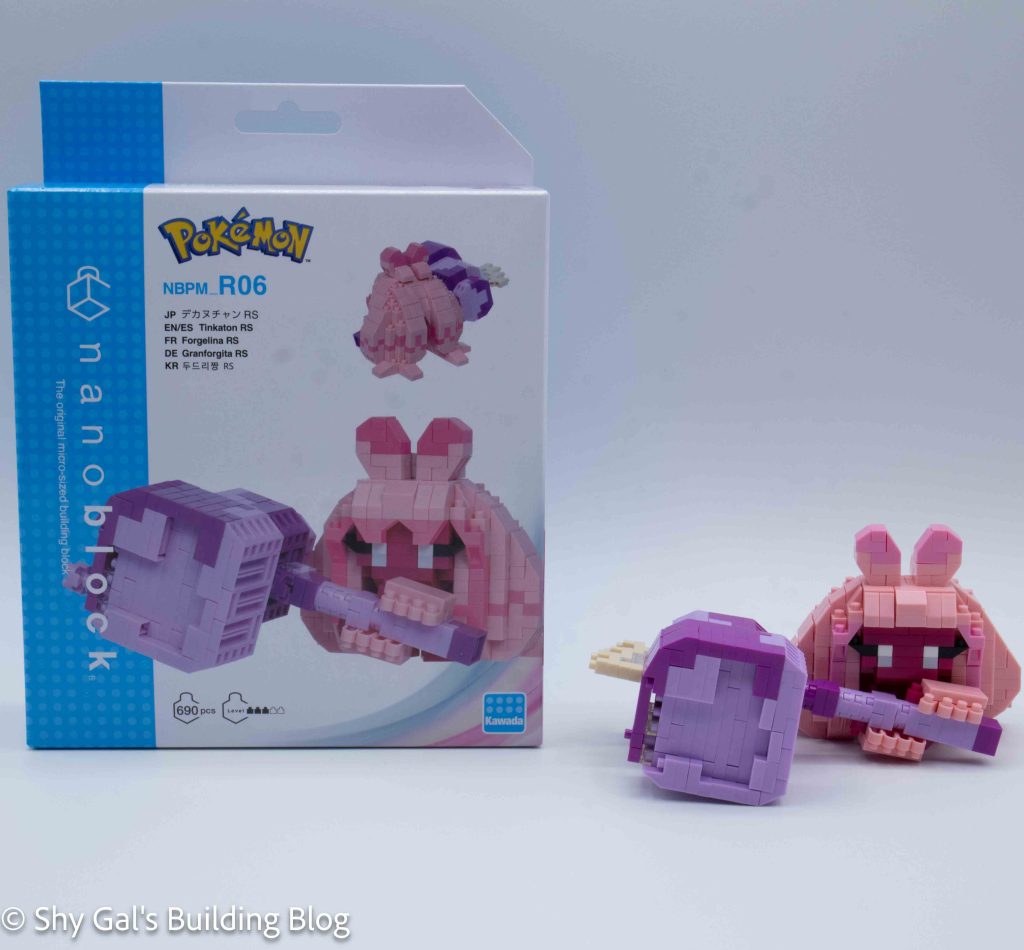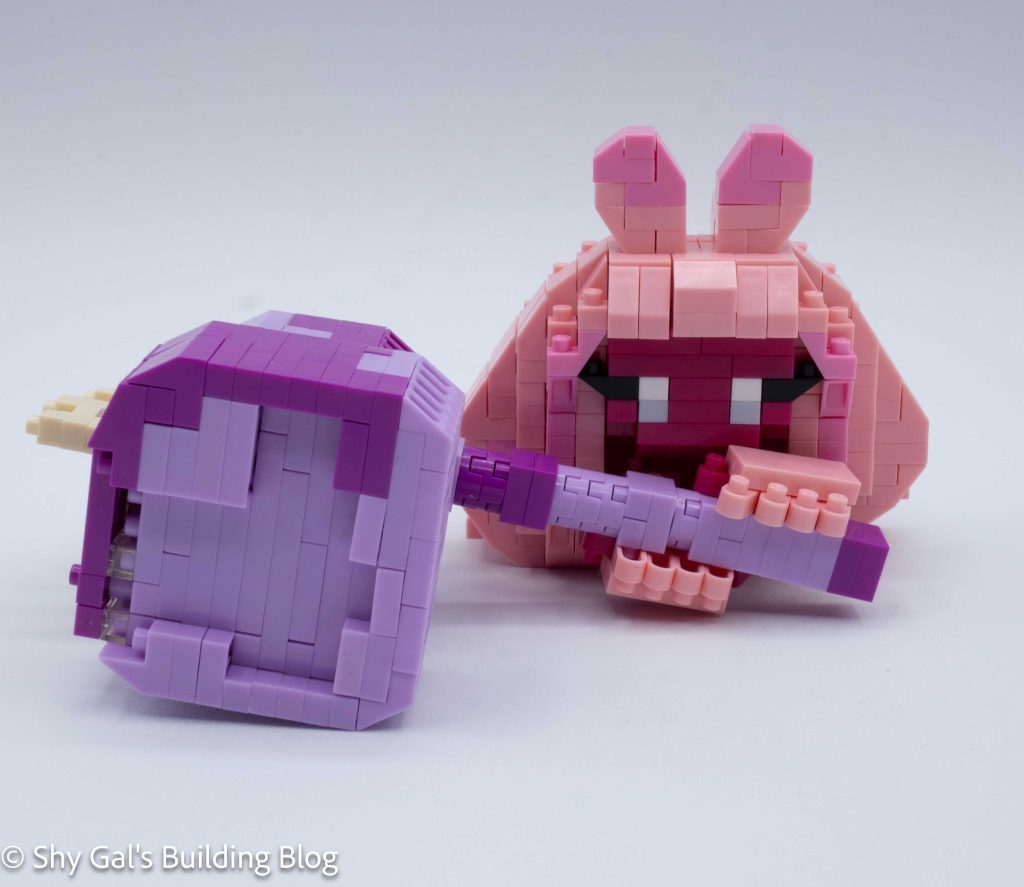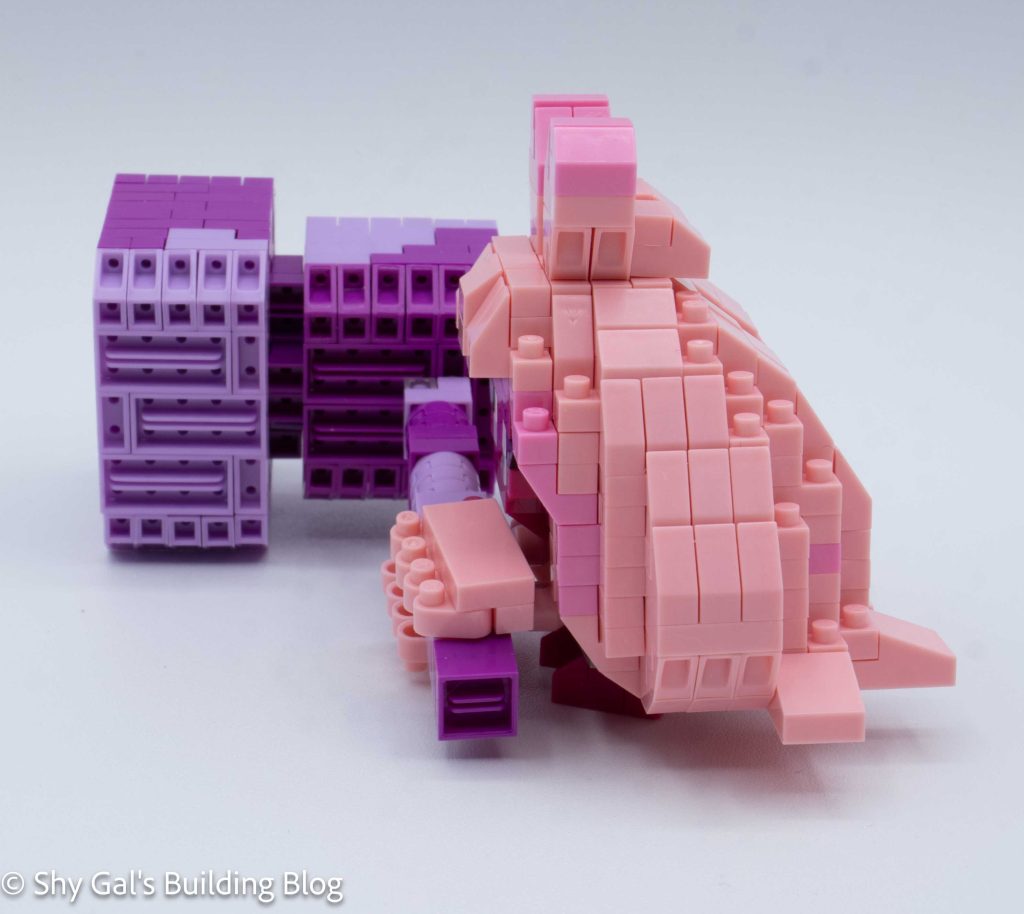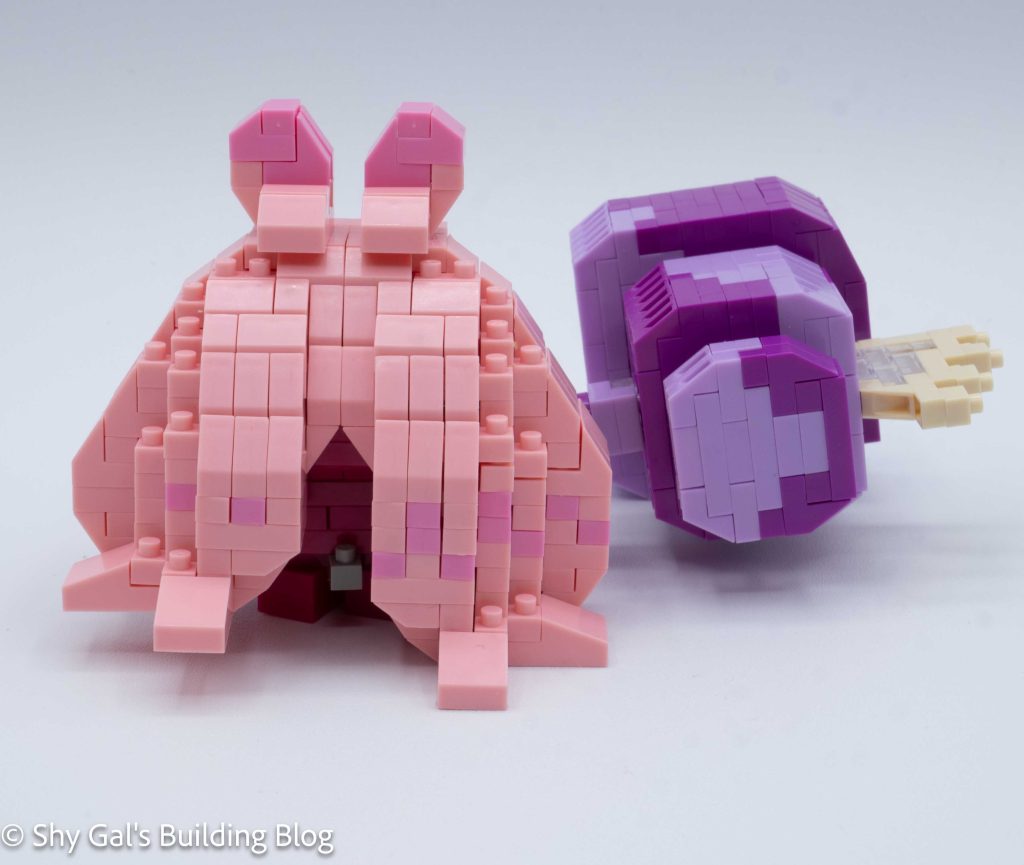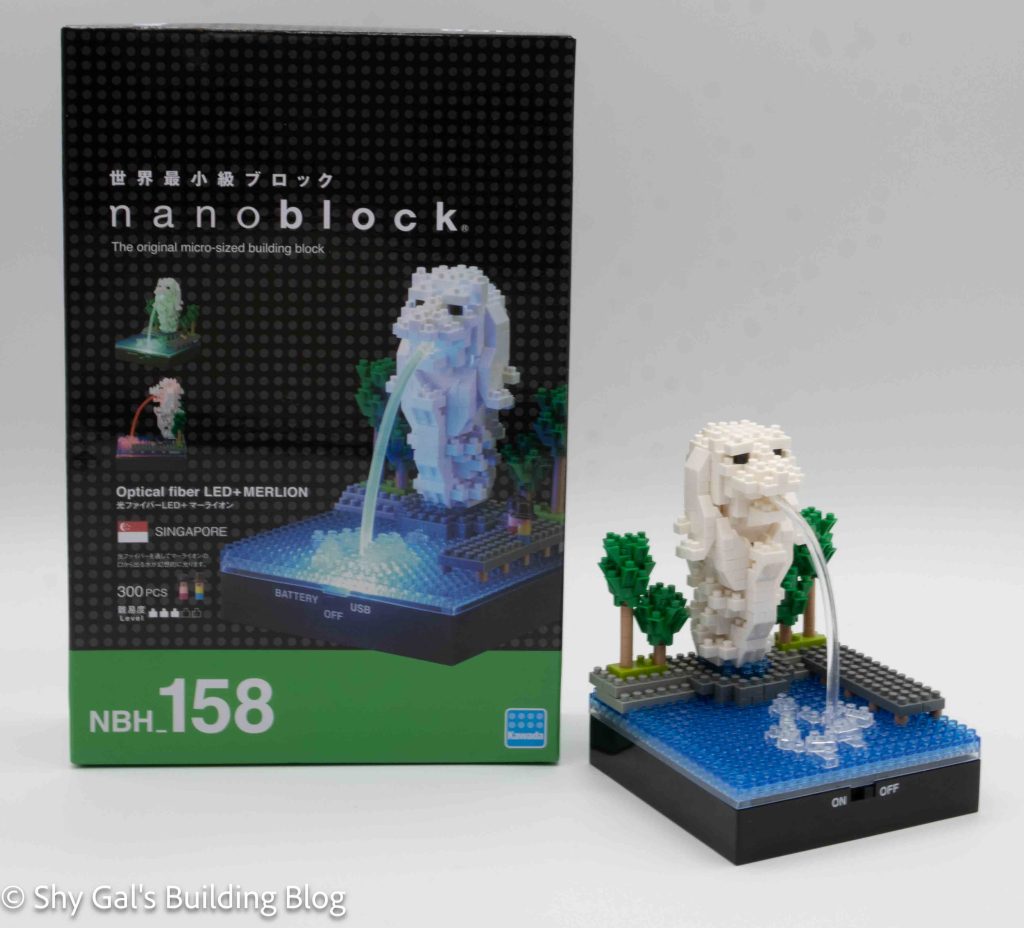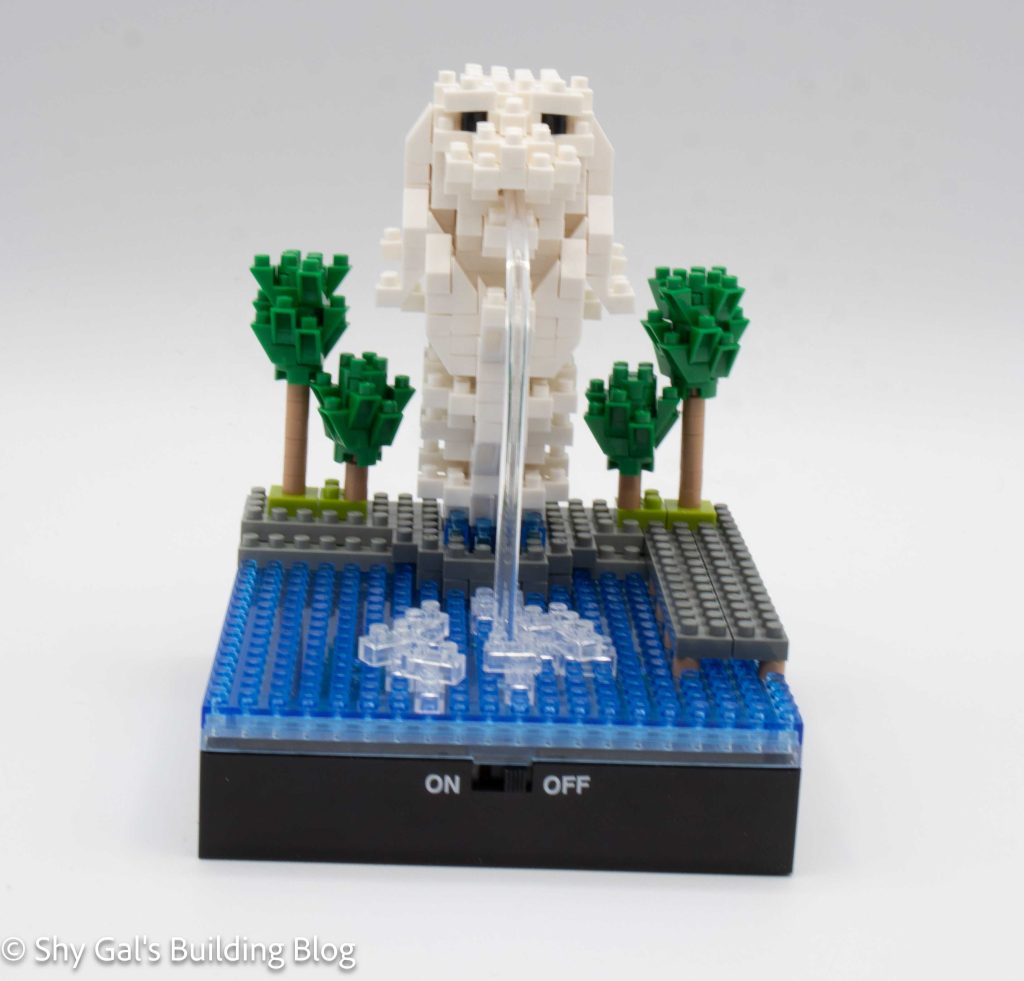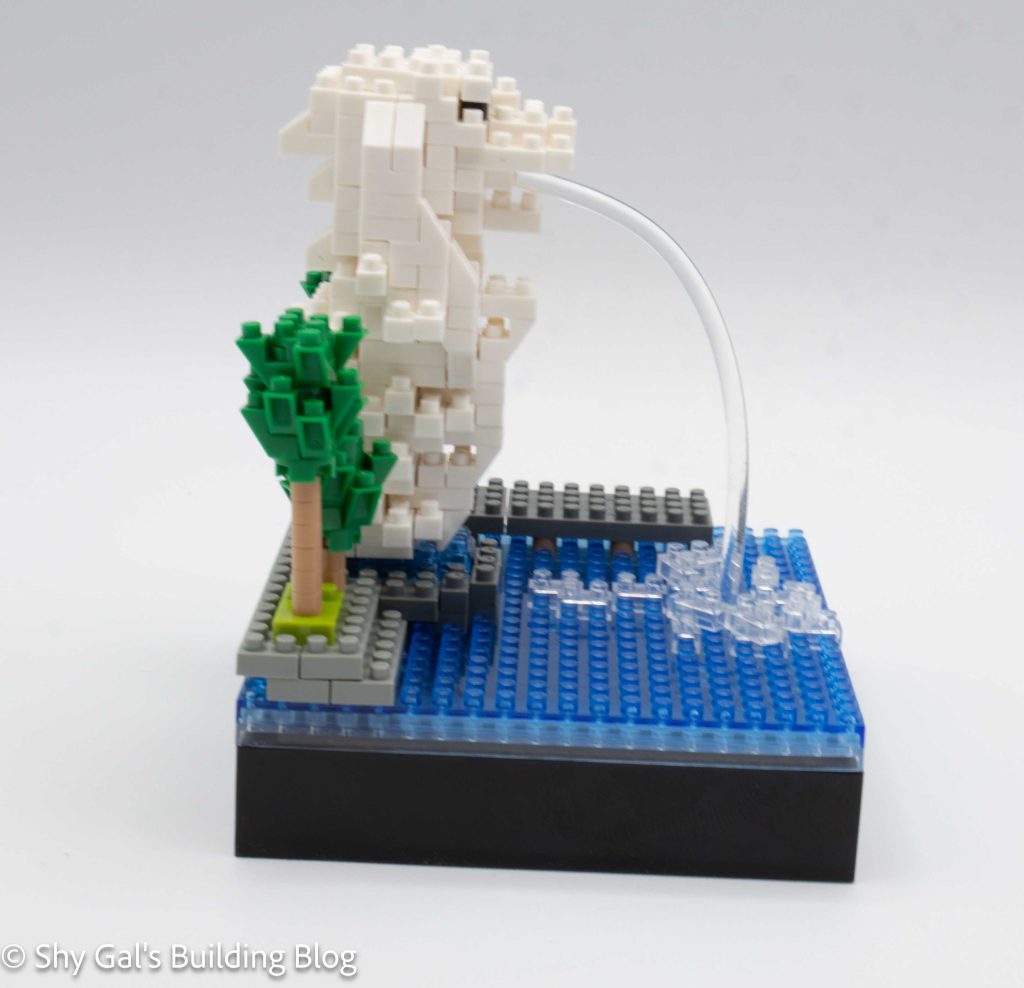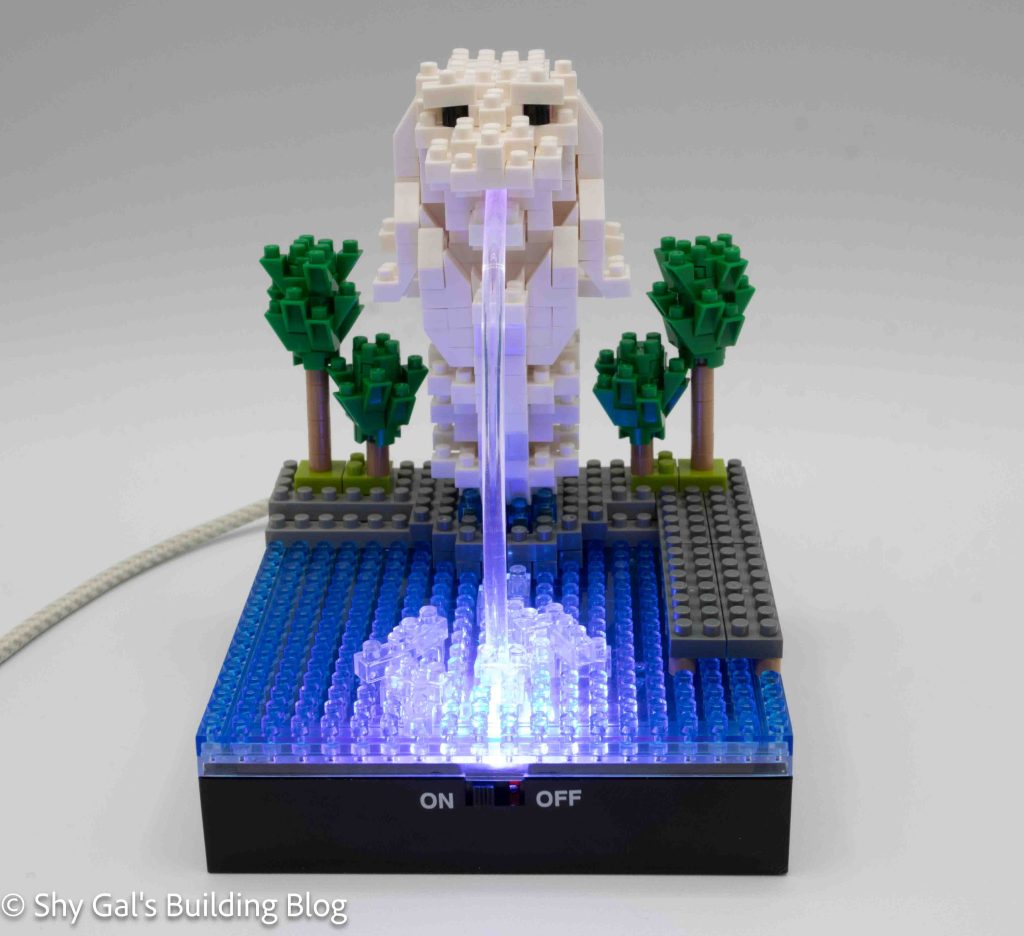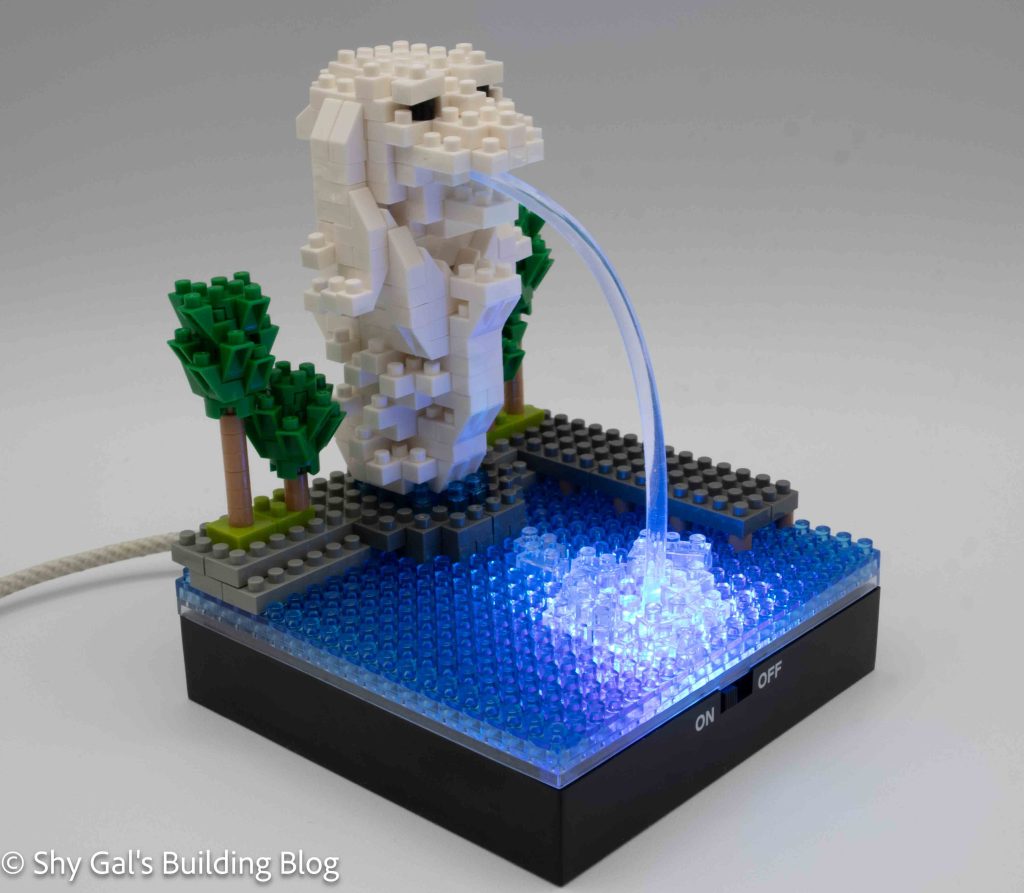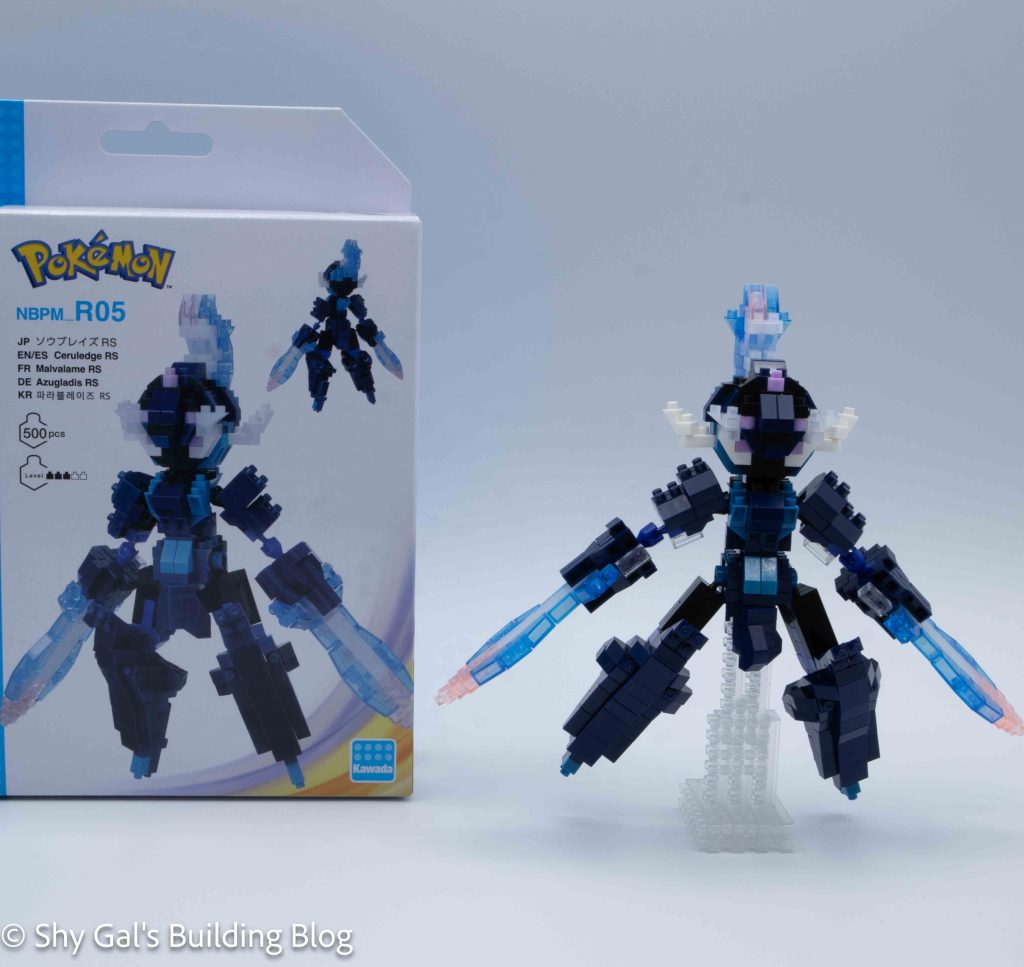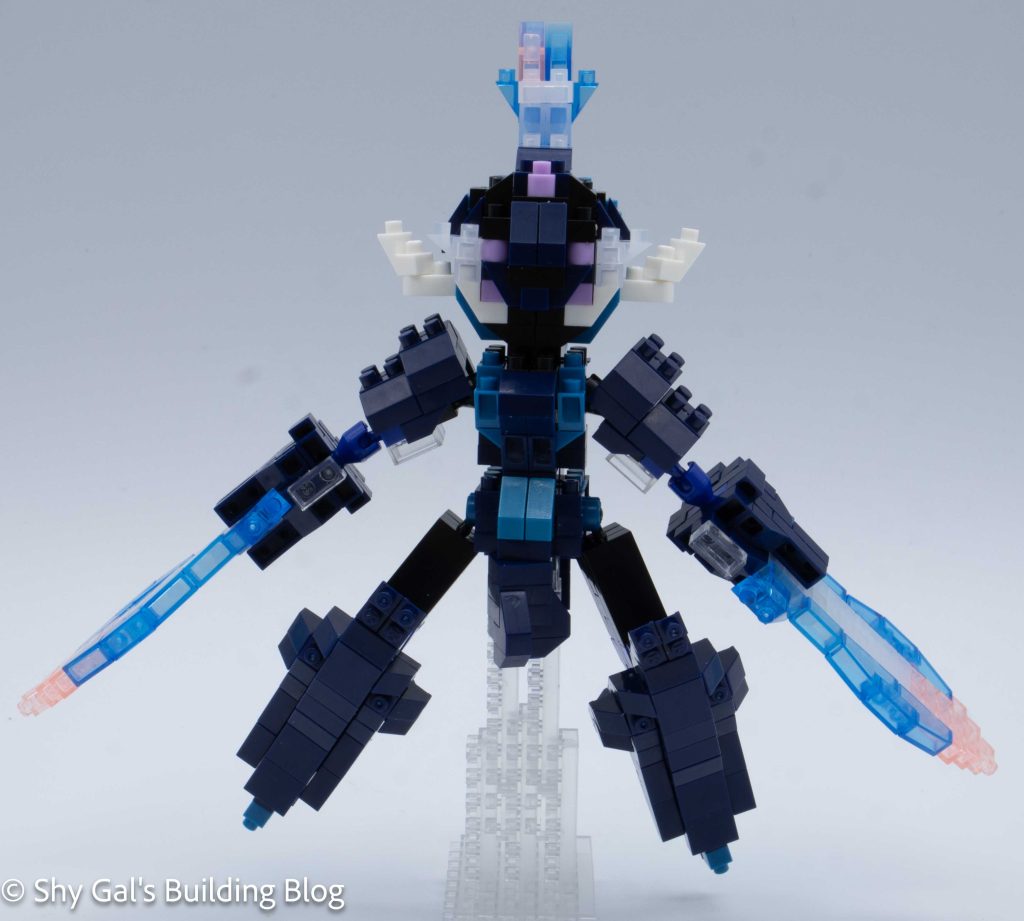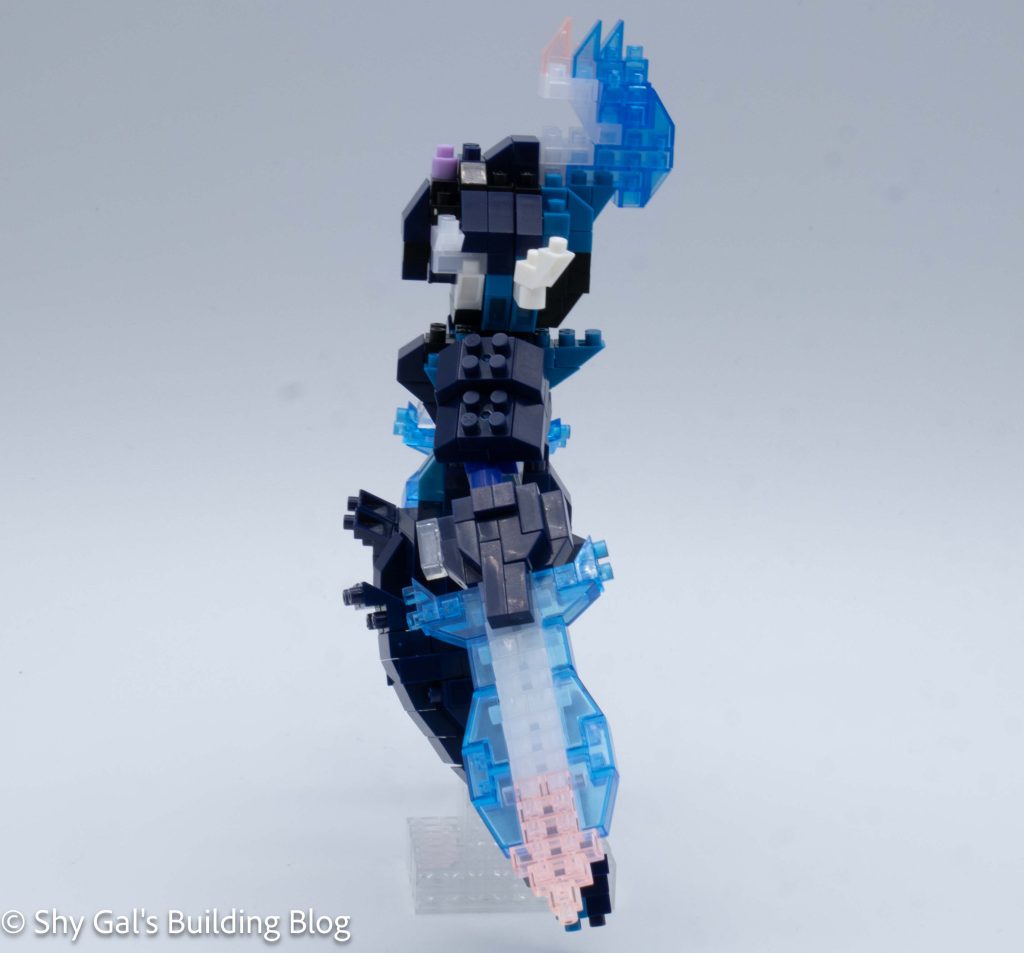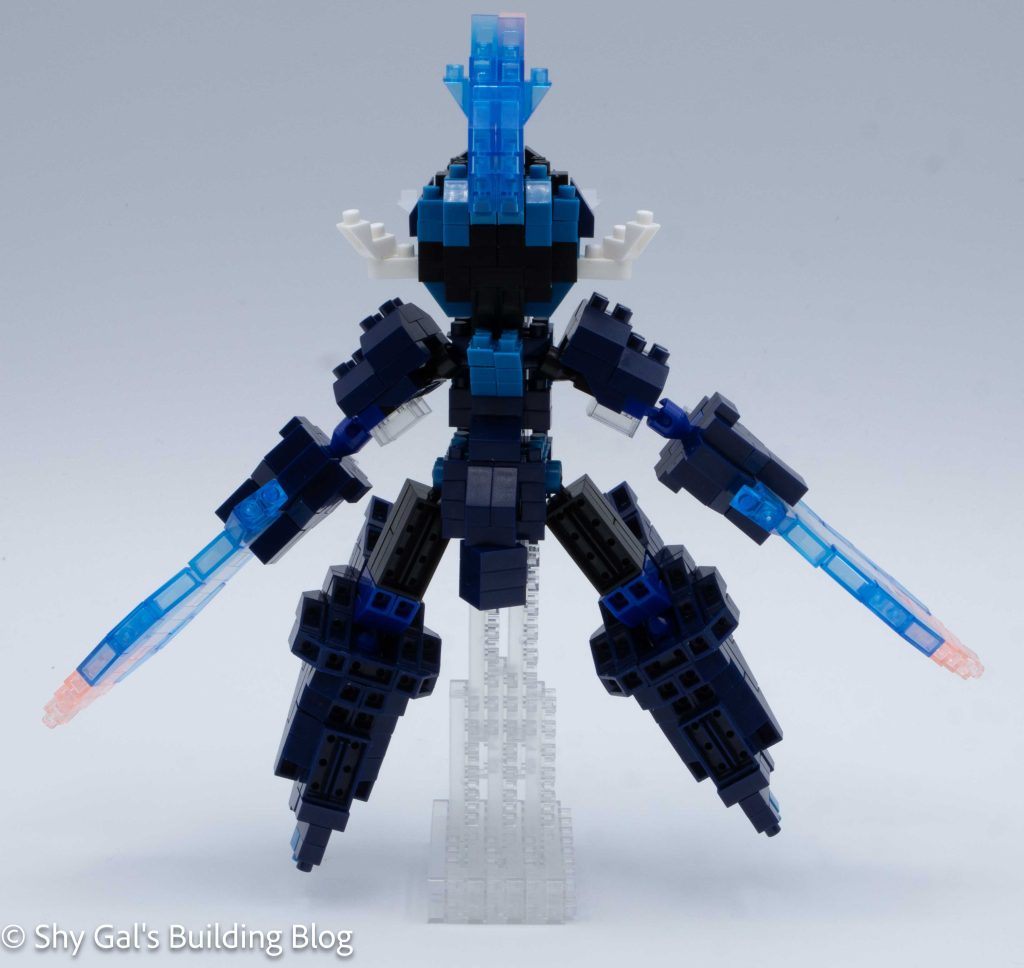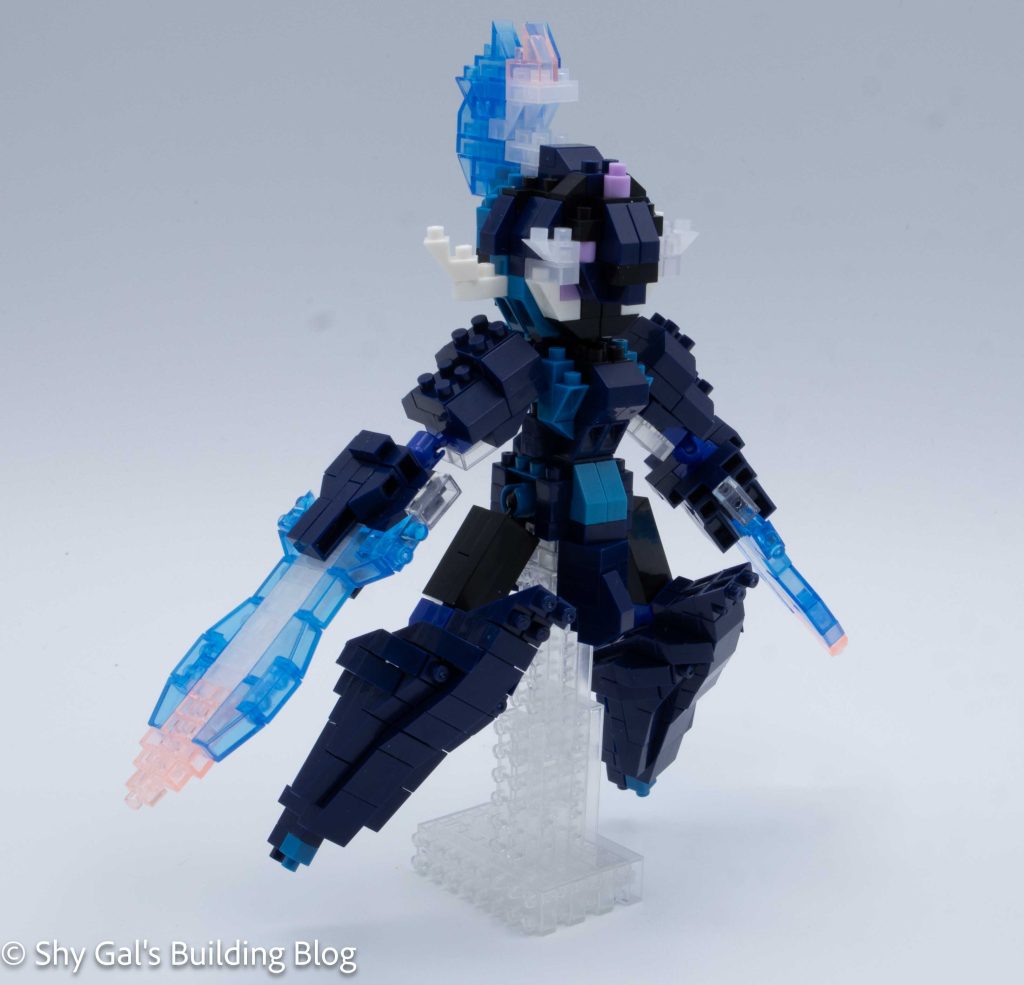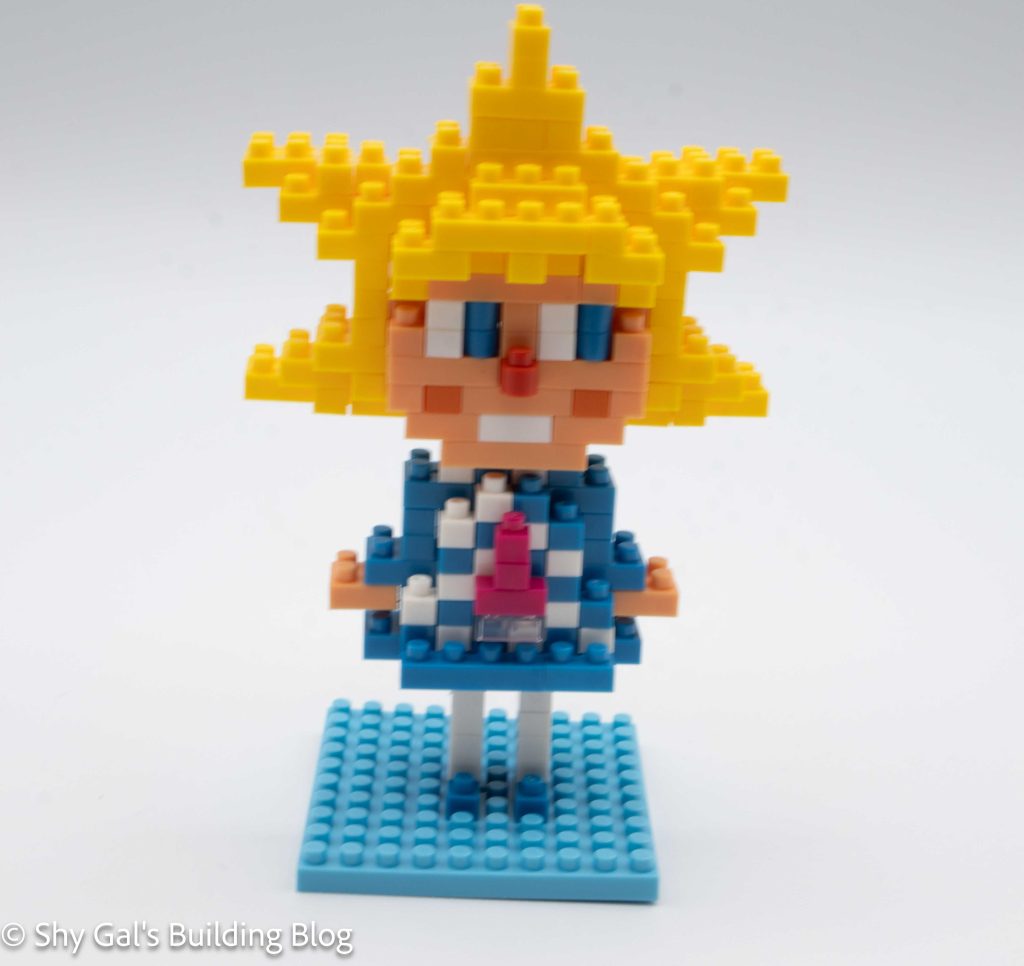
This post is a review of the nanoblock Sorakara-chan build. Sorakara-chan is part of the nanoblock Sights to See collection. Wondering what else is part of the Sights to See collection? Click Here for a list.
Sorakara-chan is the mascot from Tokyo Skytree.
Number: NBH_046
Difficulty Rating: 3
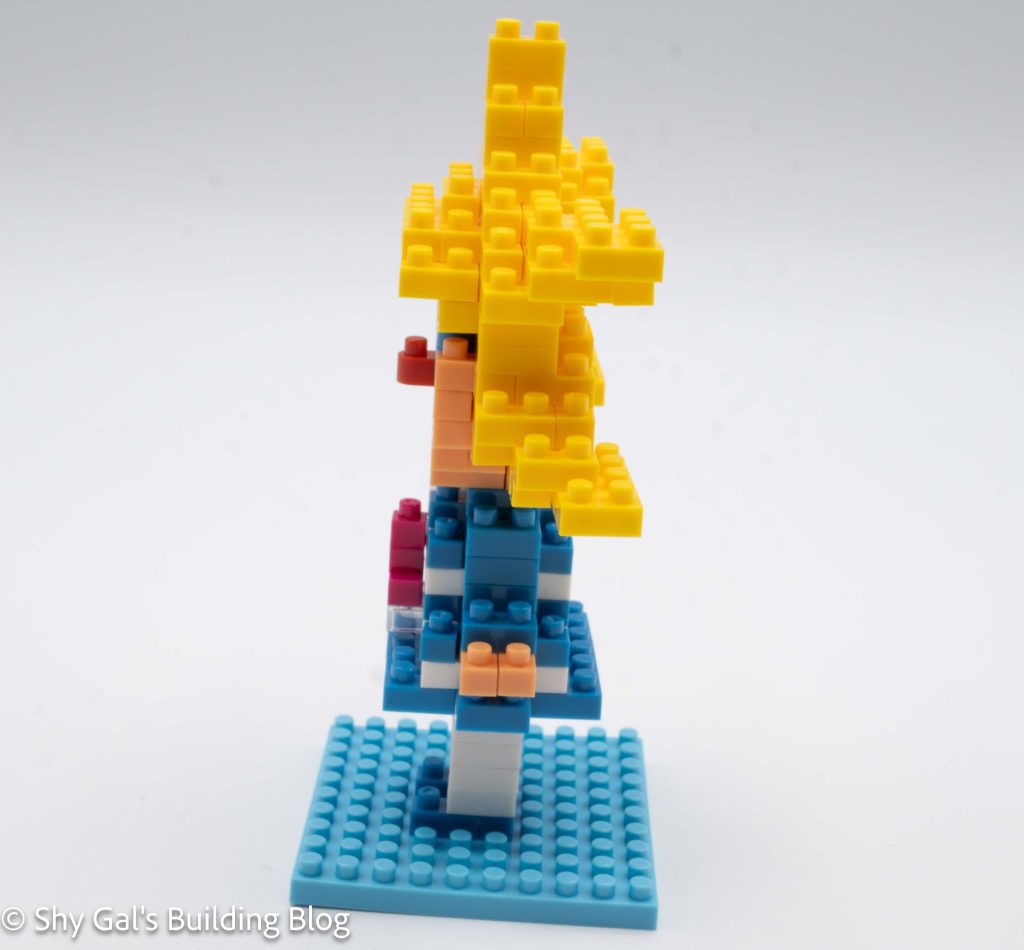
I bought this kit in an auction containing several kits that didn’t have boxes, so I don’t have the box for this kit.
This build is broken up into 3 sections. There is the head, body, and base.
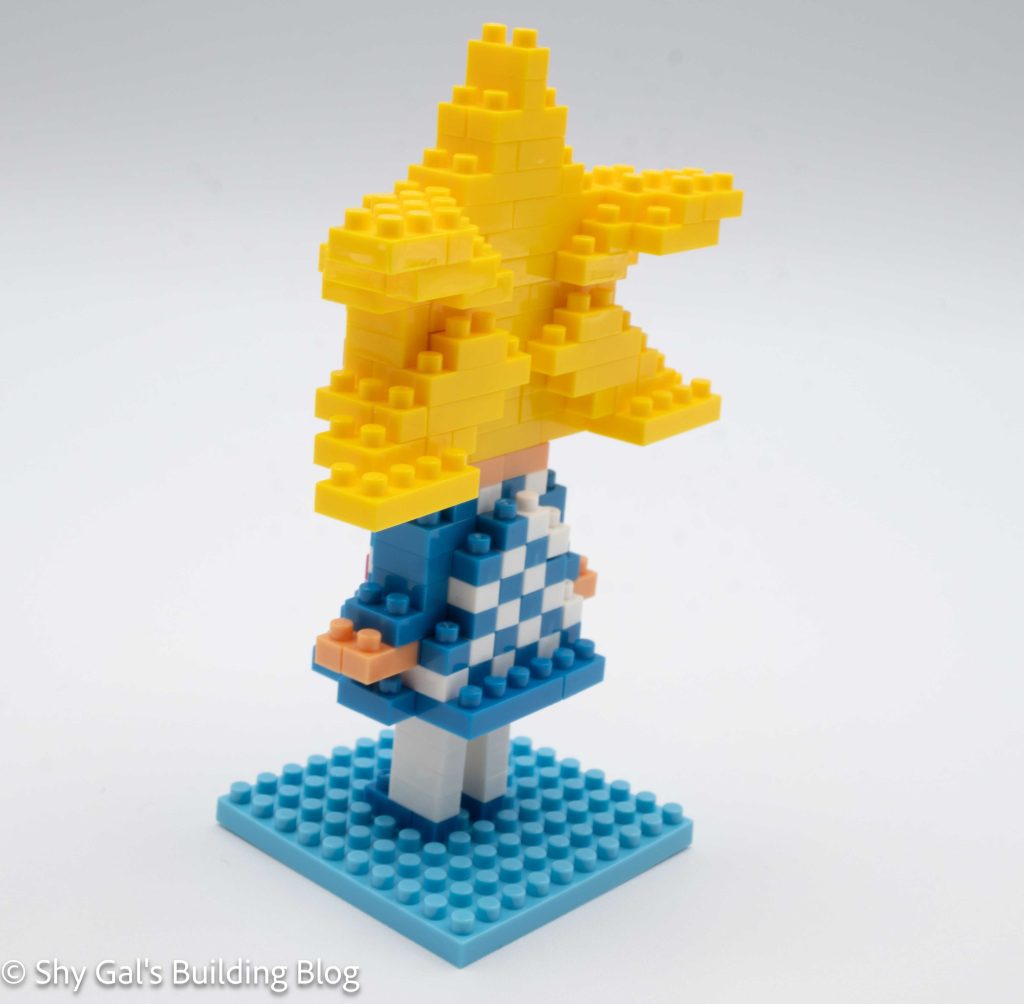
The head is by far the most complicated part of the build. The first few layers go up fairly straightforwardly. After a few layers, you begin adding all the points to her star-shaped hair. A few steps create the back of her head which are a bit hard to follow. The rest of the star points are created by adding layers to the top of the head section.
The body is straightforward if you are careful to make sure you select the correct color. It goes up in simple layers however, each layer switches off between white and blue. This creates the pattern of Sorakara-chan’s dress.
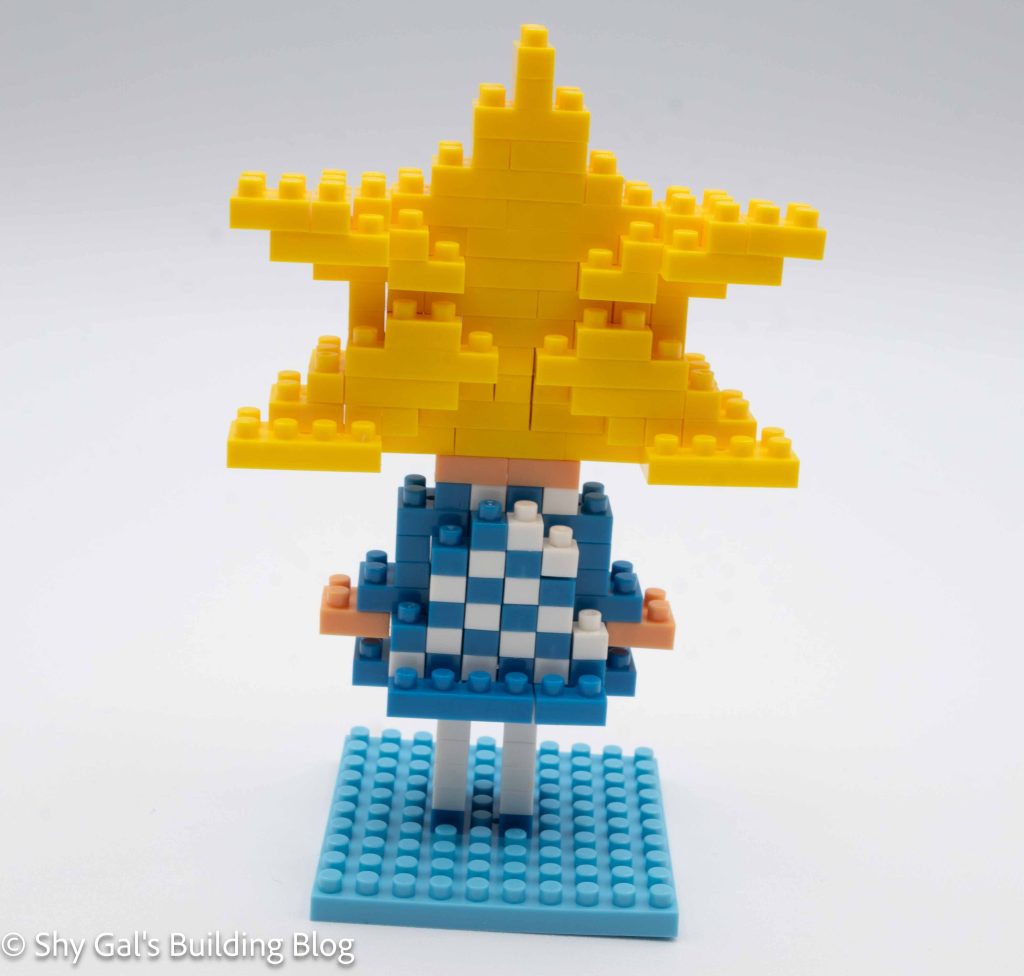
The final section is the baseplate. You only need to add her feet and legs to the final build.
The final step is to connect all the sections. Centering the body section is a bit tricky because the body is even and the space for the legs is odd. The head is easy to attach.
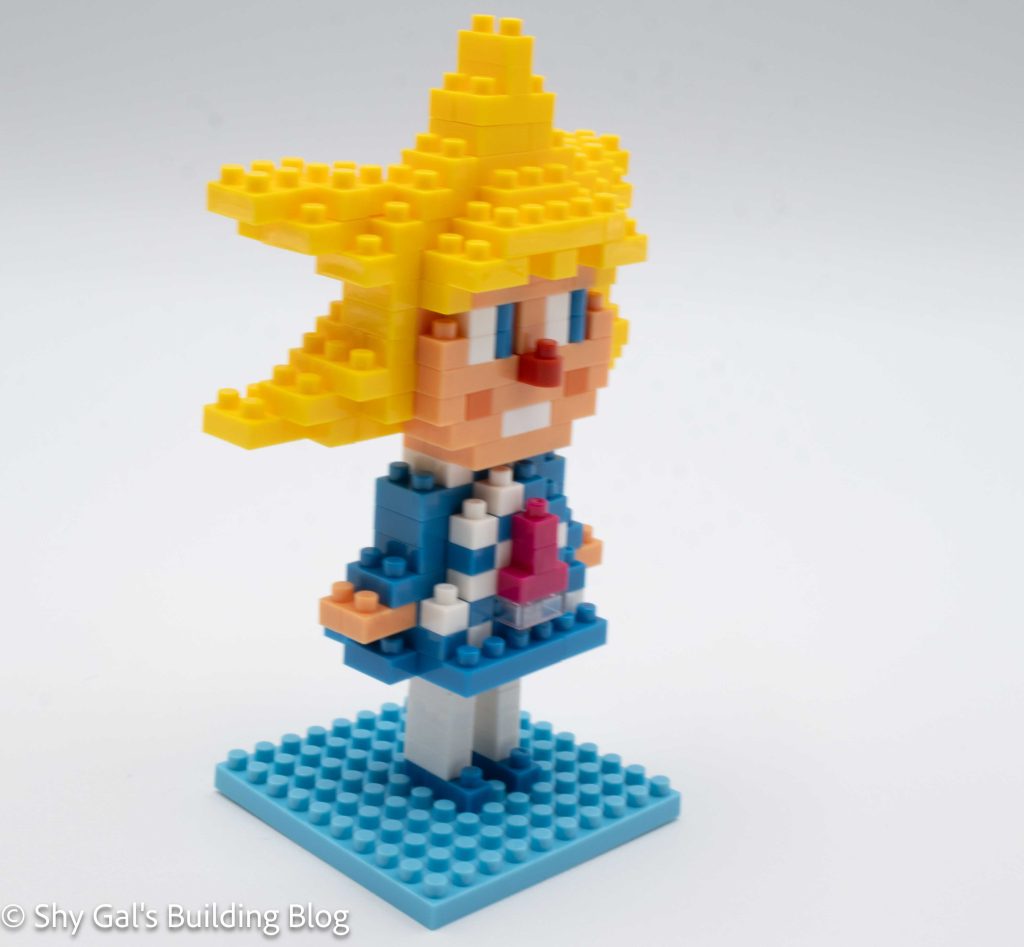
Things I liked:
- I really like her hair and how many angles are created with the nanoblock
Things I didn’t like:
- I wish the base was a different color because it makes for a lot of blue
